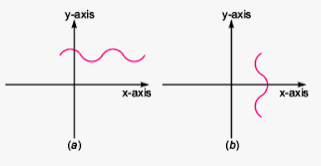On the set N of all natural numbers, a relation R is defined as follows: ∀n,m∈N, n R m Each of the natural numbers n and m leaves the remainder less than 5.Show that R is an equivalence relation. Also, obtain the pairwise disjoint subsets determined by R.Solution in Punjabi
Step by step video & image solution for On the set N of all natural numbers, a relation R is defined as follows: AA n,m in N, n R m Each of the natural numbers n and m leaves the remainder less than 5.Show that R is an equivalence relation. Also, obtain the pairwise disjoint subsets determined by R. by Maths experts to help you in doubts & scoring excellent marks in Class 12 exams.
Updated on:21/07/2023Topper's Solved these Questions
- RELATIONS AND FUNCTIONBOOK - MODERN PUBLICATIONCHAPTER - RELATIONS AND FUNCTIONEXERCISE - EXAMPLE
212 Videos
- PROBABILITYBOOK - MODERN PUBLICATIONCHAPTER - PROBABILITYEXERCISE - EXERCISE
543 Videos
- RELATIONS AND FUNCTIONSBOOK - MODERN PUBLICATIONCHAPTER - RELATIONS AND FUNCTIONSEXERCISE - EXAMPLE
13 Videos
Similar Questions
Which one of the following graph represents the function of x? Why?

View SolutionCompute P(A∣B),if P(B)=0.5 and P(A∩B)=0.32
View SolutionState the reason for the relation R, in the set {1,2,3} given by R= {(1,2), (2, 1), not to be transitive.
View SolutionOn the set N of all natural numbers, a relation R is defined as follows: ∀n,m∈N,nRm Each of the natural numbers n and m leaves the remainder less than 5.Show that R is an equivalence relation. Also, obtain the pairwise disjoint subsets determined by R.
View SolutionOn the set N of all natural numbers, a relation R is defined as follows: nRm <=> Each of the natural numbers n and m leaves the same remainder less than 5 when divided by 5. Show that R is an equivalence relation. Also, obtain the pairwise disjoint subsets determined by R .
View SolutionLet R be a relation on the set N of natural numbers defined by n R m if n divides m. Then, R is
View Solutionमाना की प्राकृत संख्याओं के सम्मुच्य N पर mRn<⇒(m−n)(m−n)=0 से परिभाषित सम्बन्ध R है| क्या R एक तुल्यता सम्बन्ध है?
View SolutionA relation R on the set of natural number NN is defined as follows :
(x,y) ∈R→ (x-y) is divisible by 5 for all x,y ∈NN Prove that R is an equivalence relation on NN.
View SolutionShow that the relation R in the set of all natural number, N defined by is an R={(a,b):|a−b|is even} in an equivalence relation.
View Solutionप्राकृत संख्याओं के समुच्चय N पर सम्बन्ध R,nRm⇔n,m का एक गुणनखण्ड है (अर्थात् n/m) , के द्वारा परिभाषित है तब R है
View SolutionOn the set N of all natural numbers, a relation R is defined as follows: ∀n,m∈N,nRm Each of the natural numbers n and m leaves the remainder less than 5.Show that R is an equivalence relation. Also, obtain the pairwise disjoint subsets determined by R.
View SolutionOn the set N of all natural numbers, a relation R is defined as follows: nRm <=> Each of the natural numbers n and m leaves the same remainder less than 5 when divided by 5. Show that R is an equivalence relation. Also, obtain the pairwise disjoint subsets determined by R .
View SolutionThe relation R defined in the set N of natural number as ∀n,minN if on division by 5 each of the integers n and m leaves the remainder less than 5. Show that R is equivalence relation. Also obtain the pairwise disjoint subset determined by R.
View Solutionप्राकृत संख्याओ के समुच्चय N में एक संबंध R निम्नलिखित प्रकार से परिभाषित कीजिए : ∀n,m∈N,nRm यदि n तथा m में से प्रत्येक संख्या को 5 से विभाजित करने पर शेषफल 5 से कम बचता है अर्थात ,0,1,2,3 तथा 4 में से कोई एक संख्या। सिद्ध कीजिए कि R एक तुल्यता संबंध है। साथ ही R द्वारा निर्धारित युगलतः असंयुक्त उप-समुच्चयों को भी ज्ञात कीजिए।
View Solutionमाना R प्राकृत संख्याओं के समुच्चय N में एक सम्बन्ध है, जो nRm, यदि n विभाजित करता है m को, द्वारा परिभाषित है, तो R
View SolutionShow that the relation R on Z – {0} defined by R={(m,n)∣mn is power of 5} is an equivalence relation.
View Solution
